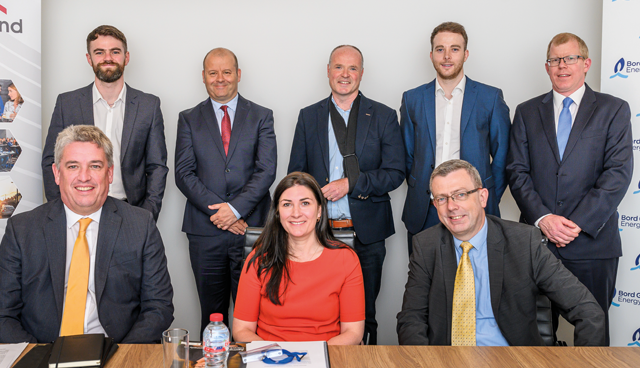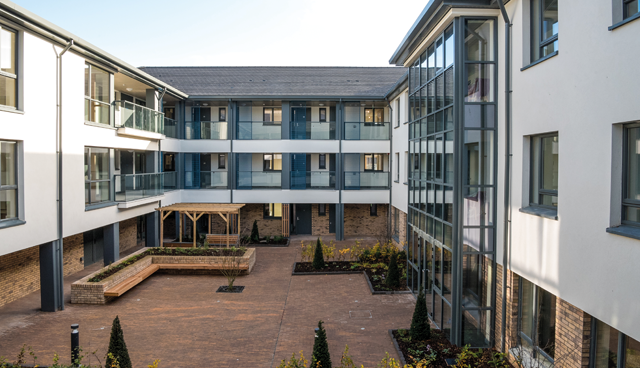
Eoin Ó Broin TD: ‘As the housing crisis deepens the case for an alternative grows’
4th July 2022
The affordability question: Cost rental and the affordable purchase schemes
4th July 2022Securing retrofit ambitions

“There is no planet B”. This phrase says it all. We are in the midst of a climate crisis, and one could argue, and some have, that we are actually facing an existential crisis of survival. Also, the sixth mass extinction of biodiversity is well and truly underway, except this one is caused primarily by human activity, writes Ciaran Byrne, Director of National Retrofit for SEAI.
The policy context
In April 2019, Ireland became only the second country in the world to declare a climate and biodiversity emergency and in June of that year the 2019 Climate Action Plan was published. This plan, and its updated version in 2021 which encompasses the National Residential Retrofit Plan (NRRP), identifies in detail the measures we will take to almost halve CO2 emissions in the residential sector to an average of 4Mt CO2 by 2030.
The scale of the ambition should not be underestimated. The core means of CO2 reduction is by upgrading 500,000 homes to a Building Energy Rating (BER) B2 rating and installing 400,000 heat pumps. No other country has targets as ambitious as ours. Indeed, many are looking on and learning from us in this area, particularly in the context of the new one stop shop model for delivering complete home energy upgrades with capacity to scale up.
The NRRP is a whole of government plan therefore it will take a whole of government response to successfully deliver on the four key pillars of the plan: driving demand and activity; financing and funding; supply chain skills and standards; and structures and governance. The success of this approach depends on ensuring that effective policy action is taken, and balanced progress is made under each pillar simultaneously.
Insights and experience
SEAI has been involved in retrofitting homes for the last 20 years, and to date has provided government grant support to over 450,000 homeowners to improve the energy performance of their homes. However, under the NRRP the increase needed in the scale of delivery to achieve the targeted CO2 emission reduction is immense and it requires a step change in how we do our business. The oft-quoted phrase “what got us here won’t get us there” comes to mind.
Our research has identified key challenges and barriers to achieving sufficient demand for retrofit, and these barriers have all been used to inform both our demand generation campaigns and also the design of our grant schemes. The key barriers include:
• a lack of awareness of what retrofit is and the multiple benefits it delivers;
• a lack of familiarity with some technologies such as heat pumps;
• homeowners being overwhelmed by the apparent complexity and number of decisions involved;
• affordability and the high upfront cost of works; and
• hassle throughout the retrofit experience from the grant application phase, through to the delivery.
Rapid and just transition
The current external environment has significantly increased the focus on home energy upgrades. Inflation is nearing a 40-year high, much of it caused by surges in energy prices as a result of a range of macro-economic factors, not least the illegal war in Ukraine. At an EU level we have just completed the sixth round of sanctions against Russia, and Taoiseach Micheál Martin has warned about a “new era” of high energy prices and a “watershed moment for fossil fuels in general”.
This supports the call to get on board with the transition away from fossil fuels. One of the guiding principles of the move to a carbon neutral economy is that of just transition. This ensures that the transition will be a fair one and no one will be left behind. It is in this context that the new grant supports for home energy upgrades launched in February this year, include up to 80 per cent grant funding for wall and cavity insulation. These measures are relatively quick to do, and they have a tangible benefit to the comfort and energy performance of the home in the long term. Homeowners can avail of these individual grants to upgrade their home insulation and at a later stage consider a renewable heating system or solar panels for which there are also generous grants.

Simple innovation
Also launched at the same time in February was a new scheme called the Home Energy Upgrade Scheme which will use one stop shops to deliver an end-to-end home upgrade service. This is for homeowners who wish to carry out a suite of energy upgrades all at once to bring their home to a B2. On one level, the development of one stop shops is revolutionary, but on another level it’s a very simple innovation responding to the needs of homeowners, using a design thinking approach to address the barriers listed above. What this basically entails is that the design of the scheme and the supporting processes were made from the perspective of what our customers, the homeowners, really want. How it works is suitably qualified organisations register with SEAI to become a one stop shop. They will then guide a homeowner through the entire process of undertaking a home energy upgrade from initial concept through to technical design, implementation and securing generous government grant funding from SEAI, and at the same time removing the hassle from the process.
The new one stop shop service provides a fixed price menu of grants which can fund up to 50 per cent of the total cost of the home energy upgrade. This is a significant contribution from government towards this work, however the homeowner must still fund the rest of the upgrade themselves. To make this element of the upgrade more affordable for homeowners and non-corporate landlords, SEAI is supporting our parent department to develop a retrofit loan guarantee scheme. This will provide risk protection to retail credit institutions participating in the scheme enabling them to offer loans with significantly reduced interest rates. We expect these low-cost loans to become available towards year end further boosting demand for home energy upgrades.
As with any significant transformation, it’s not going to be easy. We are undertaking this one step at a time when there are all manner of pressures and strains on the economy, from increasing interest rates, supply chain challenges, inflation, significant labour shortages right across the economy and competition from other parts of the construction sector. But let’s not forget, we are in a climate and biodiversity emergency. The stakes are high, and we need to keep our eyes on the prize. We have to do the right thing and do it now.
E: ciaran.byrne@seai.ie
W: www.seai.ie







